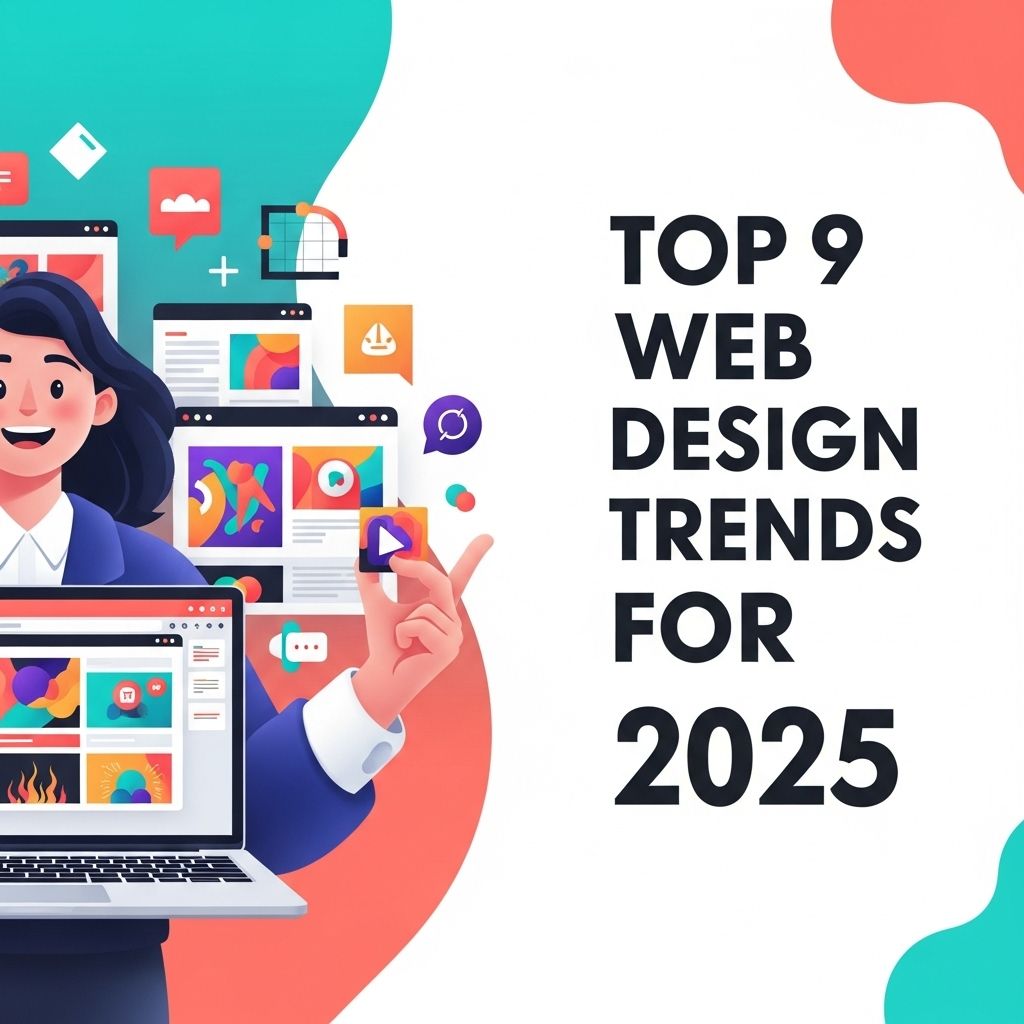The world of web design is ever-evolving, constantly adapting to new technologies, user expectations, and design trends. As we look towards 2025, it’s essential for developers and designers to stay ahead of the curve by incorporating innovative ideas that enhance visual appeal and user experience. This article explores the cutting-edge web design concepts anticipated to shape the future of the digital landscape.
1. Emphasis on User Experience (UX)
User experience will continue to be a dominant force in web design. With an increasing number of users accessing websites on mobile devices, designing for usability is paramount. Here are some key aspects to focus on:
- Responsive Design: Websites must seamlessly adapt to various screen sizes. Mobile-first design is crucial in ensuring optimal user experience.
- Intuitive Navigation: Simplifying menus and creating clear pathways will enhance usability, making it easier for users to find what they need.
- Fast Load Times: Optimizing images and compressing files can significantly reduce load times, improving user retention.
2. AI-Driven Design Personalization
Artificial Intelligence (AI) is transforming web design by enabling personalized experiences based on user behavior. Here’s how designers can utilize AI:
- Customized Content: AI can analyze user preferences and deliver tailored content, leading to higher engagement.
- Predictive Analysis: By employing machine learning algorithms, sites can predict user needs and offer relevant suggestions.
- Chatbots and Virtual Assistants: Integrating AI-powered chatbots for customer support can enhance user interaction and provide immediate assistance.
3. Minimalism with a Twist
While minimalism has been a trend for years, it’s evolving into a more dynamic form by incorporating unexpected design elements:
Key Features of Modern Minimalism
- Bold Typography: Large, eye-catching fonts can create strong visual hierarchies that guide user attention.
- Micro-Animations: Subtle animations can enhance the user experience without overwhelming the senses.
- Contrasting Colors: Utilizing a limited color palette with striking contrasts can create an impactful aesthetic.
4. Advanced Use of Gradients and Textures
In 2025, gradients and textures will move beyond mere backgrounds to serve as integral parts of the design:
Integrating Gradients
Gradients can add depth and dimension to elements:
- Use for buttons and call-to-action areas to increase visibility.
- Create dynamic backgrounds that add interest without distracting from content.
Incorporating Textures
Textured elements can create a tactile feel digitally:
- Use subtle textures in backgrounds for a rich user experience.
- Combine real-world textures with digital elements for a unique look.
5. Voice User Interface (VUI)
The rise of voice-activated devices is leading to an increase in voice user interfaces. Websites will need to adapt accordingly:
Designing for Voice Interaction
Consider these components:
- Use concise language that aligns with spoken queries.
- Incorporate audio feedback to improve user satisfaction.
- Ensure compatibility with various voice assistants.
6. Immersive Experiences with Virtual Reality (VR) and Augmented Reality (AR)
VR and AR technologies are set to revolutionize web design by creating immersive experiences:
Applications of VR and AR
| Technology | Application | Benefits |
|---|---|---|
| Virtual Reality | 360-degree product views | Enhanced engagement and user interaction |
| Augmented Reality | Interactive elements in real-time | Increased understanding and personalization |
7. Sustainability in Web Design
As environmental concerns rise, sustainable web design practices will take center stage:
- Efficient Coding: Writing clean, efficient code can reduce server load and energy consumption.
- Eco-friendly Hosting: Choose hosting services that prioritize renewable energy sources.
- Minimal Resource Usage: Design with fewer resources and optimize media files to reduce the overall carbon footprint.
8. Enhanced Security Features
With cyber threats becoming increasingly sophisticated, prioritizing security in web design is critical:
Designing Secure Websites
Implement these features:
- HTTPS everywhere: Ensure all sites are served securely.
- User education: Offer clear information on security features and practices.
- Regular updates: Keep software and plugins updated to mitigate vulnerabilities.
Conclusion
As we approach 2025, the landscape of web design will be marked by innovation and creativity. By embracing user-centric designs, harnessing the power of AI, and integrating emerging technologies like AR and VR, designers can create compelling, efficient, and sustainable web experiences. Staying informed and adaptable will be crucial for anyone in the web design field as we strive to meet the evolving needs of users in the digital age.
FAQ
What are the top web design trends for 2025?
In 2025, top web design trends include immersive experiences through augmented reality, minimalistic designs with bold typography, and the integration of AI for personalized user experiences.
How can I incorporate sustainability into web design?
Sustainable web design can be achieved by optimizing images for faster loading times, using energy-efficient hosting services, and prioritizing clean coding practices to reduce server load.
What role does responsive design play in 2025?
Responsive design remains crucial in 2025 as users access websites from various devices, ensuring a seamless experience across smartphones, tablets, and desktops.
Are dark mode designs still popular in 2025?
Yes, dark mode continues to be popular in 2025, offering users a visually appealing option that reduces eye strain and enhances battery life on devices.
How important is accessibility in web design for 2025?
Accessibility is vital in 2025, as inclusive designs ensure all users, including those with disabilities, can navigate and interact with websites effectively.




